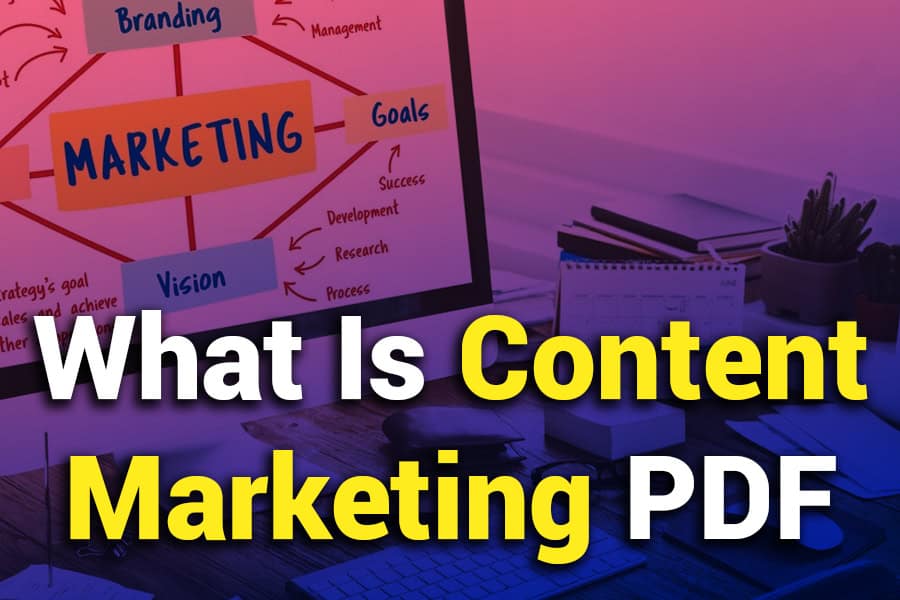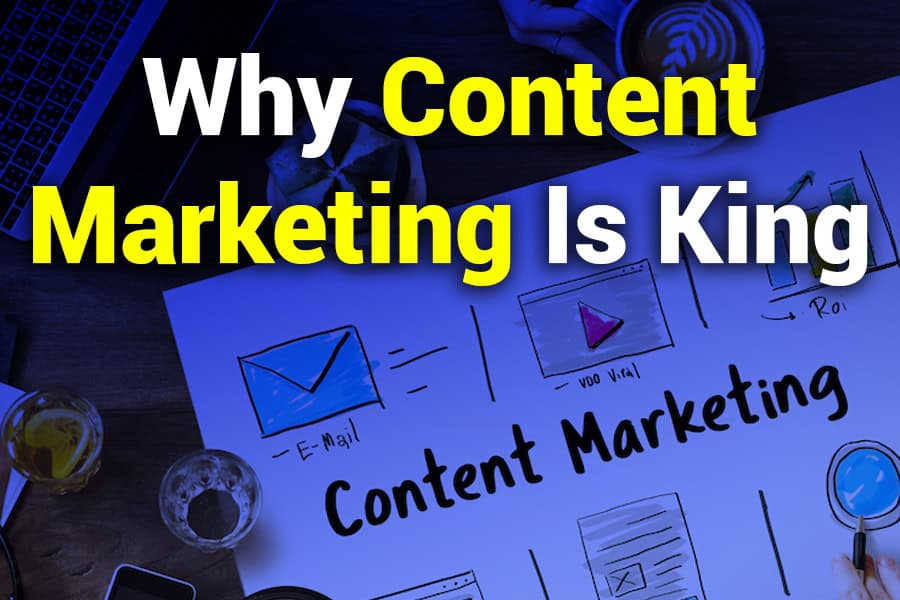
Content marketing has become an integral part of digital marketing strategies. Businesses leverage content marketing to attract, engage, and retain audiences by providing valuable and relevant content. When looking for a comprehensive understanding of what is content marketing, a structured approach can help you create and distribute content effectively. This guide explores content marketing principles, its importance, strategies, and benefits, along with a detailed breakdown of how businesses can use it to grow. Whether you’re a beginner or an expert, this guide provides an in-depth look into content marketing, helping you maximize its potential.
What is a content marketing PDF?
Content marketing is a strategic approach focused on creating and distributing valuable, relevant, and consistent content to attract and engage a defined audience. It helps businesses build trust, increase brand awareness, and drive conversions. A content marketing PDF provides a structured resource covering its strategies, benefits, and best practices, making it easy for marketers to implement effective campaigns.
The Fundamentals of Content Marketing
Content marketing is a digital marketing strategy that revolves around providing useful and relevant content to attract and retain an audience. Instead of direct promotion, businesses use informative and engaging content to establish trust and credibility. By consistently delivering high-value information, brands position themselves as industry leaders while fostering strong relationships with potential and existing customers.
Unlike traditional advertising, content marketing focuses on long-term engagement rather than short-term sales. Companies that invest in content marketing see higher levels of customer retention and brand loyalty. Blogs, videos, infographics, and eBooks are just a few types of content used in marketing strategies.
One of the biggest advantages of content marketing is its ability to enhance brand authority. Well-researched and engaging content helps businesses stand out from the competition, making them go-to sources of information within their industry. By addressing customer pain points, brands can build strong connections and improve lead generation efforts.
From small startups to global enterprises, businesses of all sizes can leverage content marketing to drive traffic, improve search engine rankings, and increase engagement. The key to success is crafting content that provides genuine value while aligning with the company’s overall marketing goals.
Core Components of Effective Content Marketing
Content Strategy & Planning
A well-defined content marketing strategy lays the foundation for success. It involves setting clear objectives, understanding the target audience, and establishing a structured plan for content creation and distribution. Identifying key goals, whether brand awareness, lead generation, or customer retention, ensures content aligns with business objectives. Additionally, developing a content calendar helps maintain consistency and ensures regular publication, keeping audiences engaged over time.
Content Creation & Development
High-quality content is at the heart of any successful content marketing approach. Whether it’s blog posts, videos, social media updates, or infographics, content should be informative, engaging, and tailored to the needs of the audience. Well-researched, compelling, and valuable content captures attention and encourages audience interaction. Focusing on storytelling and problem-solving helps businesses establish credibility while building long-term relationships with their customers.
SEO Optimization for Better Visibility
Search engine optimization (SEO) is essential for making content discoverable. Implementing relevant keywords, writing compelling meta descriptions, and using structured headings enhance search rankings and drive organic traffic. Optimized content ensures that potential customers find valuable information related to their queries, improving visibility and engagement. In addition to keyword placement, factors like mobile-friendliness, readability, and page speed contribute to improved search engine performance.
Content Distribution Across Multiple Platforms
Creating great content is only the first step—effective distribution is equally important. Leveraging social media platforms, email marketing, and guest blogging helps extend the reach of content. Sharing across multiple channels ensures that the right audience engages with the content in their preferred format. Repurposing content into different formats, such as transforming blog posts into videos or infographics, further increases reach and impact.
Performance Tracking & Analytics
Measuring content performance is crucial to refining marketing strategies. Analyzing engagement metrics, website traffic, bounce rates, and conversions provides valuable insights into what resonates with the audience. Using analytics tools helps marketers identify successful content types, optimize underperforming pieces, and adjust distribution strategies for better results. Regularly assessing content performance ensures continuous improvement and a more effective content marketing strategy.
Benefits of Content Marketing
- Increases Brand Awareness – Engaging content helps businesses reach a wider audience and establish brand authority.
- Drives Organic Traffic – SEO-friendly content attracts visitors from search engines, improving website traffic.
- Boosts Customer Engagement – High-quality content encourages interactions, comments, and shares.
- Enhances Lead Generation – Gated content like eBooks and whitepapers help capture potential leads.
- Improves Conversion Rates – Well-crafted content nurtures leads and guides them through the sales funnel.
- Strengthens Customer Loyalty – Providing valuable content consistently builds trust and long-term relationships with customers.
Common Content Marketing Mistakes to Avoid
Many businesses struggle with content marketing due to common mistakes. One major mistake is neglecting audience research. Without understanding audience preferences, content may fail to resonate, leading to low engagement.
Another common issue is inconsistent posting. Failing to maintain a content schedule can result in reduced visibility and decreased audience interest. Creating a content calendar ensures regular updates and sustained engagement.
Ignoring SEO is another mistake that limits content visibility. Content that lacks keyword optimization, meta descriptions, and structured formatting may not rank well in search engines, reducing its reach and impact.
Additionally, brands sometimes prioritize quantity over quality. Publishing numerous low-quality articles can harm credibility. Instead, focusing on well-researched, valuable content drives better results.
Lastly, failing to analyze performance metrics prevents businesses from improving their strategy. Regularly tracking engagement, conversions, and audience feedback helps optimize content marketing efforts for maximum success.
Best Practices for Effective Content Marketing
- Understand Your Target Audience: A successful content marketing strategy begins with knowing your audience. Conduct thorough research to identify their preferences, pain points, and behaviors. This helps create content that resonates with them, increasing engagement and conversion rates. Surveys, social media insights, and website analytics are valuable tools to gather audience data and refine your content approach.
- Create High-Quality, Relevant Content: Producing valuable and informative content is key to building trust with your audience. Ensure your content is engaging, well-researched, and addresses specific needs or questions. Whether it’s blog articles, tutorials, or thought leadership pieces, quality content keeps your audience interested and establishes your brand as an authority in your industry.
- Diversify Content Formats for Maximum Reach: Different audiences consume content in various ways, so diversifying formats increases your reach. Incorporate blogs for in-depth insights, videos for visual learners, podcasts for on-the-go consumption, and infographics for quick, digestible information. Offering a mix of content types ensures broader accessibility and audience engagement.
- Leverage Social Media & Email Marketing: Content distribution is as important as creation. Utilize social media platforms like LinkedIn, Twitter, and Instagram to share valuable insights, drive traffic, and increase brand awareness. Additionally, integrating content into email marketing campaigns nurtures leads, keeps subscribers informed, and strengthens customer relationships.
- Optimize for SEO & Search Visibility: Content that ranks well on search engines attracts more organic traffic. Use relevant keywords, compelling meta descriptions, internal linking, and well-structured headings to enhance visibility. SEO-friendly content improves discoverability and ensures your target audience finds your brand easily.
- Monitor, Analyze & Improve Performance: Regularly tracking content performance helps identify what works and what doesn’t. Use analytics tools to measure engagement, bounce rates, and conversion metrics. Based on data insights, refine your content strategy, adjust formats, and optimize distribution to achieve better marketing results.
Conclusion
When looking for a complete guide on what is content marketing PDF, understanding key strategies and best practices is essential. From creating high-quality content to optimizing distribution, content marketing plays a crucial role in digital success. By implementing effective strategies and continuously improving content efforts, businesses can establish authority, increase engagement, and drive conversions. With the right approach, content marketing remains a powerful tool for long-term brand growth and audience connection.
FAQ’s
Q. What is content marketing, and why is it important?
A. Content marketing is a strategy that focuses on creating valuable and relevant content to attract and engage audiences, ultimately driving brand growth and sales.
Q. What are the different types of content marketing?
A. Common types include blog posts, videos, podcasts, infographics, case studies, and social media content.
Q. How can I start with content marketing?
A. Begin by identifying your target audience, creating a content strategy, and consistently producing high-quality content tailored to your audience’s needs.
Q. How does content marketing improve SEO?
A. Optimized content helps search engines rank websites higher, increasing organic traffic and online visibility.
Q. What tools can help with content marketing?
A. Popular tools include HubSpot, SEMrush, Google Analytics, Canva, and WordPress for content creation, optimization, and tracking.
Jessica Jones
Jessica Jones is a talented writer at J Morgan Marketing, where she excels in creating compelling and engaging content tailored to meet the unique needs of clients. With a keen understanding of digital marketing strategies, Jessica crafts narratives that not only captivate audiences but also drive brand growth. Her expertise spans across various content forms, from blog posts and articles to social media and SEO-driven copy, ensuring that every piece resonates with its intended audience and contributes to the overall marketing goals. Passionate about storytelling and innovation, Jessica is dedicated to helping brands connect with their audience through powerful and effective content.





